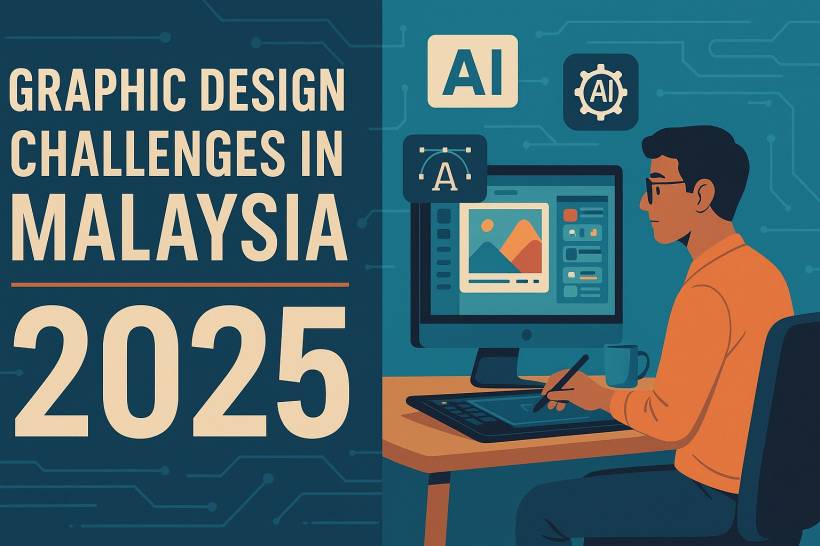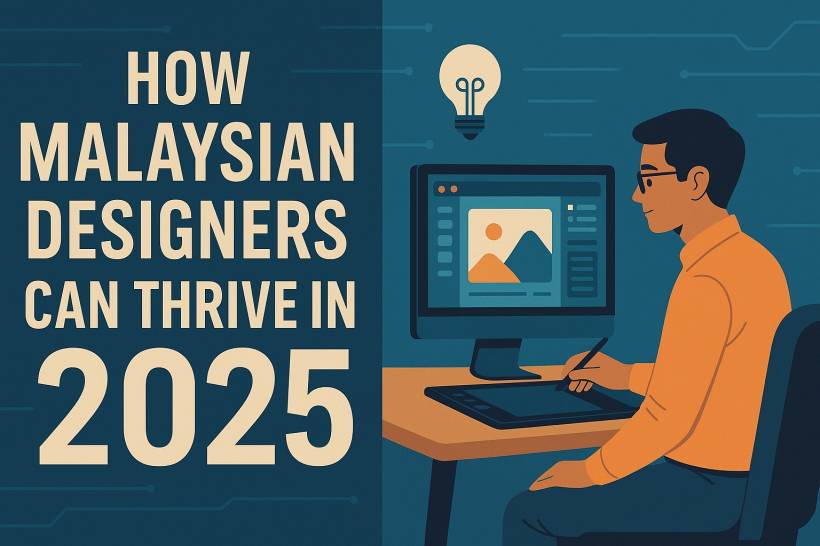Graphic design has always been a dynamic career. From the days of print-heavy layouts to today's digital-first campaigns, designers in Malaysia have constantly adapted to shifting trends. But 2025 feels different. The rise of artificial intelligence (AI), changing market expectations, and economic pressures are reshaping the industry in ways that demand serious reflection.
The Local Reality: What Designers Face in Malaysia Competition and Market Saturation
Ask any local designer and they'll tell you the same thing—there are a lot of designers in Malaysia right now. From freelancers fresh out of design school to experienced professionals, the market feels crowded. Platforms like JobStreet consistently list hundreds of design vacancies, but the reality is that employers are spoilt for choice. Unless you have a standout portfolio, it's easy to blend into the background.
This is why many designers feel undervalued. A viral debate earlier this year sparked controversy when a Malaysian influencer argued that design degrees are "worthless" compared to AI tools like ChatGPT or Canva, which cost a fraction of a monthly salary. While the comment was provocative, it does reflect a sentiment in the market: clients are hunting for cheap, fast solutions.
Freelance vs. In-House Dilemma
Designers also find themselves at a career crossroads: go freelance or work in-house. Freelancing offers freedom, but income instability is a constant worry. In-house positions provide stability, yet often come with less creative autonomy. Many Malaysian designers switch between the two throughout their careers, depending on financial needs and lifestyle priorities.
The Shift from Print to Digital
Gone are the days when posters, flyers, and pamphlets dominated a designer's workload. Today, the focus has shifted heavily toward social media content, UI/UX assets, and short-form digital ads. The pace is relentless. Businesses expect designers to churn out visuals quickly to match fast-moving online campaigns. This means designers not only need artistic skill but also adaptability and speed.
The AI Disruption: Friend or Foe? The Fear Factor
Globally, nearly nine out of ten designers believe AI poses some form of threat to their jobs. Many expect fewer design roles in the coming years as AI automates repetitive tasks and provides clients with cheap alternatives. In Malaysia, where cost-sensitive businesses dominate, this fear feels especially real.
And there's no denying the pressure. AI tools can generate layouts, logos, and social media templates in seconds. For clients who don't see the difference between "good enough" and "great design," AI seems like an attractive replacement.
The Reality Check
But here's the catch: AI isn't perfect. Many AI-generated visuals are unusable for professional work. Logos come out generic, files aren't in vector format, and cultural nuances are often ignored. A machine can throw out hundreds of ideas, but it takes a human eye to refine them into something meaningful, memorable, and aligned with brand identity.
This is where Malaysian designers still have the edge. Local context matters—whether it's cultural symbolism during Hari Raya campaigns, bilingual typography for multilingual audiences, or understanding the nuances of Malaysian humor in branding. AI can't replicate this kind of insight.
AI as a Creative Partner
The smartest designers aren't rejecting AI—they're using it. Instead of treating AI as competition, many professionals are leveraging it to save time. Tasks like color correction, resizing, and concept sketching can be handled by AI, freeing designers to focus on the strategic and creative side of projects.
Think of AI as your design assistant: it generates the raw ideas, but you decide what to polish, what to scrap, and what to elevate into something truly original.
How Malaysian Designers Can Thrive in 2025
1. Master Prompting and AI Tools
Knowing how to use AI effectively is becoming as important as knowing Photoshop. Learn how to prompt tools properly to generate inspiration and speed up repetitive work. The difference between an average output and a usable draft often comes down to how well you guide the machine.
2. Focus on What AI Can't Do
AI can't tell a story the way you can. It doesn't understand Malaysia's rich cultural diversity or the subtleties of local traditions. Designers who specialize in brand storytelling, cultural campaigns, or unique visual identities will continue to stand out.
3. Expand Into New Media
Graphic design no longer stops at static images. Interactive design, AR/VR elements, motion graphics, and data visualization are areas where demand is rising. By expanding into these fields, designers future-proof their careers and stay relevant in a tech-driven market.
4. Build a Personal Style
In a world where AI churns out endless "cookie-cutter" visuals, your personal style becomes your biggest asset. Clients will hire you not for generic templates, but for the unique voice and perspective you bring to a project.
5. Stay Connected with the Community
Design in Malaysia doesn't exist in isolation. Events like the Golden Pin Design Dialogue in Kuala Lumpur highlight how the industry is blending tradition with innovation. These communities provide valuable networking opportunities, mentorship, and inspiration to push beyond the basics.
Final Thoughts
Being a graphic designer in Malaysia in 2025 is both challenging and exciting. The industry is crowded, clients are demanding, and AI is changing the rules of the game. But this doesn't mean design is dead—it means design is evolving.
Those who embrace AI as a partner, double down on uniquely human strengths, and carve out their own voice in the market will not just survive but thrive. Creativity has never been about the tools—it has always been about the people behind them. And in Malaysia, with our diverse culture and growing digital landscape, the canvas for design has never been bigger.





